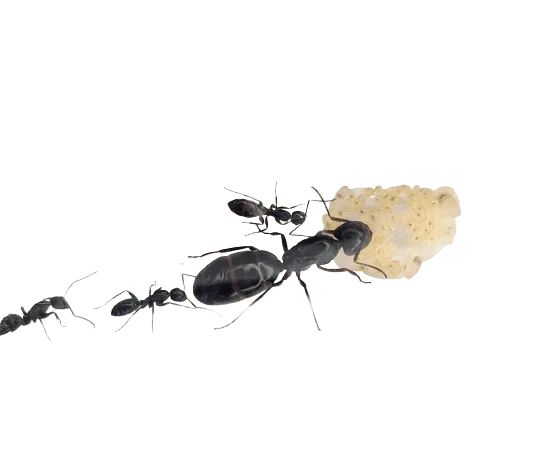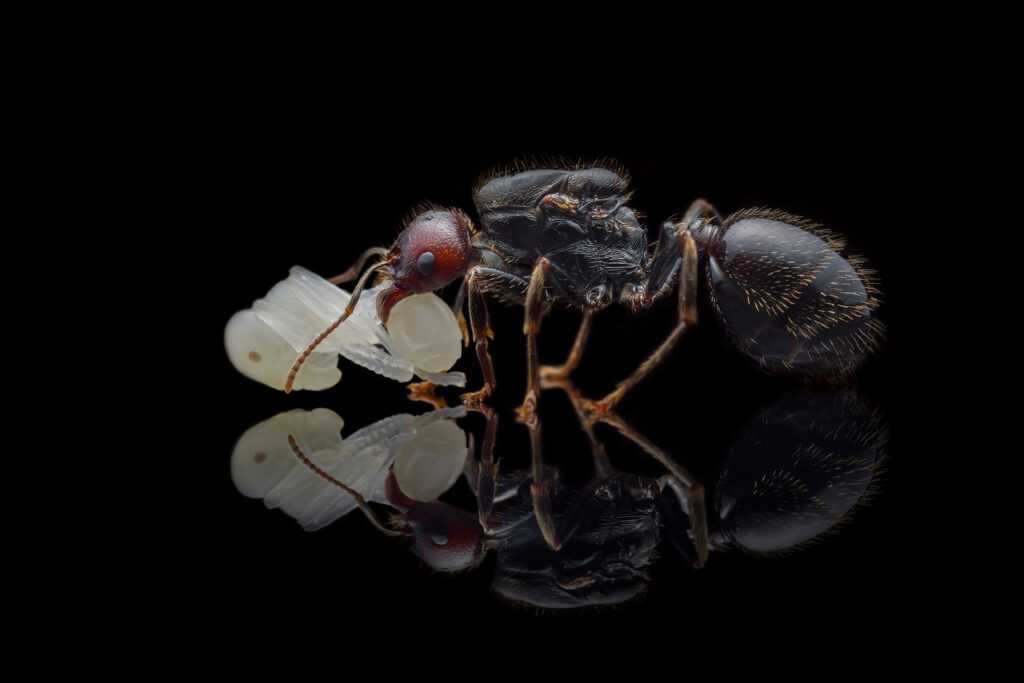About Camponotus distinguendus: A Fascinating Species of Ants
The Camponotus distinguendus is a truly captivating species of ants that is known for its unique characteristics and fascinating behavior. As a monogynous species, it forms large colonies with impressive caste systems and displays a medium development speed. In this article, we will delve into the various features of Camponotus distinguendus, including its size, color, nutritional needs, humidity and temperature preferences, and recommended nests for breeding.
Size: Varied Castes
Camponotus distinguendus exhibits a significant variation in size among its different castes:
- Queen: The queen ant measures between 14 and 19 mm in length.
- Workers: The workers are relatively smaller, ranging from 6 to 10 mm in length.
- Majors: The majors, also known as soldier ants, are the largest individuals in the colony, with sizes between 10 and 18 mm.
These size differences play a crucial role in the division of labor within the colony and contribute to the efficient functioning of the Camponotus distinguendus society.
Distinctive Coloration
Camponotus distinguendus is easily recognizable by its distinctive appearance. Their bodies are primarily dark gray or black, while their abdomens have a golden hairy texture. This stunning color combination makes them stand out in various environments.
Nutritional Needs
Providing proper nutrition is essential for the well-being and productivity of Camponotus distinguendus colonies. The following diverse food sources are recommended:
- Insect food: Cockroaches and crickets are ideal sources of nutrition as they provide essential proteins and nutrients.
- Syrup: Ants can also be fed with syrup made from a mixture of water and honey in various ratios depending on colony preferences.
- Fruits and vegetables: Small pieces of fruit and vegetables are valuable sources of natural sugars and additional nutrients for the colony.
- Jelly: Some ants have a particular fondness for jelly, which can be a great source of energy.
- Cooked chicken without salt: Cooked chicken without salt can serve as a protein-rich alternative to supplement the ant’s diet.
By offering a diverse range of food options, ant keepers can ensure that their Camponotus distinguendus colonies have access to the necessary nutrients for their overall health and vitality.
Humidity and Temperature Preferences
Camponotus distinguendus flourishes under specific humidity and temperature conditions:
- Arena humidity: The optimal humidity range in the foraging area is between 30% and 50%.
- Nest humidity: Maintaining a humidity level of 40% to 60% within the nest is crucial for the ant colony’s well-being.
- Arena temperature: The recommended temperature range in the foraging area is between 24 and 28 °C.
- Nest temperature: Maintaining a stable temperature of 22 to 26 °C within the nest ensures the ants’ overall comfort and development.
By closely controlling humidity and temperature factors, ant keepers can provide optimal conditions for the successful growth and development of Camponotus distinguendus colonies.
Distinguishing Feature: Unique Caste System
One of the distinguishing features of Camponotus distinguendus is the presence of large majors and five castes with different sizes and appearances. This diversity within the colony enhances their social organization and efficiency in various tasks. The division of labor and specialization among the different castes allow the colony to function smoothly and adapt to changing environmental conditions.
Recommended Nests for Breeding
When breeding Camponotus distinguendus, it is crucial to provide suitable nests that cater to their specific needs. Some recommended nest materials include:
- Acrylic: Acrylic nests offer visibility, durability, and ease of maintenance, making them popular among ant enthusiasts. Learn more about ant-related products here.
- Cork: Cork nests provide a natural and breathable environment that aids in humidity regulation.
- Gypsum: Gypsum nests have excellent moisture retention properties, ensuring the required humidity levels are maintained for the colony’s well-being.
- Aerated Concrete: These nests offer effective moisture regulation, durability, and a comfortable living space for the ants.
By choosing the appropriate nest material, ant keepers can create a suitable habitat that promotes the growth and development of Camponotus distinguendus colonies.
Conclusion
Camponotus distinguendus is a captivating species of ants with unique characteristics, including size variation, distinctive coloration, a complex caste system, and specific humidity and temperature preferences. By understanding their needs and providing proper care, ant enthusiasts can enjoy observing and nurturing these remarkable creatures within the carefully selected nests. Whether you are a beginner or an experienced ant keeper, Camponotus distinguendus is a species that will undoubtedly captivate your interest and provide a rewarding ant-keeping experience.

















Reviews
There are no reviews yet.